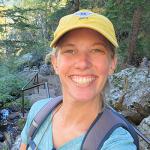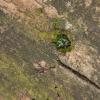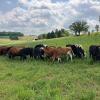Hunched over against
The vegetation was very short in this area because we had mowed down the vegetation, again, last summer. Equipped with brush cutters and the appropriate personal protective equipment, we had removed black raspberries, smooth sumac, and other weedy plants, while avoiding desirable native grasses, sedges, and forbs where they appeared to be holding their own in areas of the remnant prairie. The work was grueling and hot. We were not using herbicide, so it was critical to cut the vegetation as low to the ground as possible and as many times as possible. Targeted applications of herbicide can be helpful for some land management tasks, but at this site we chose to not use herbicide to avoid harming any critical native species present. This task was done twice in the summer of 2020.
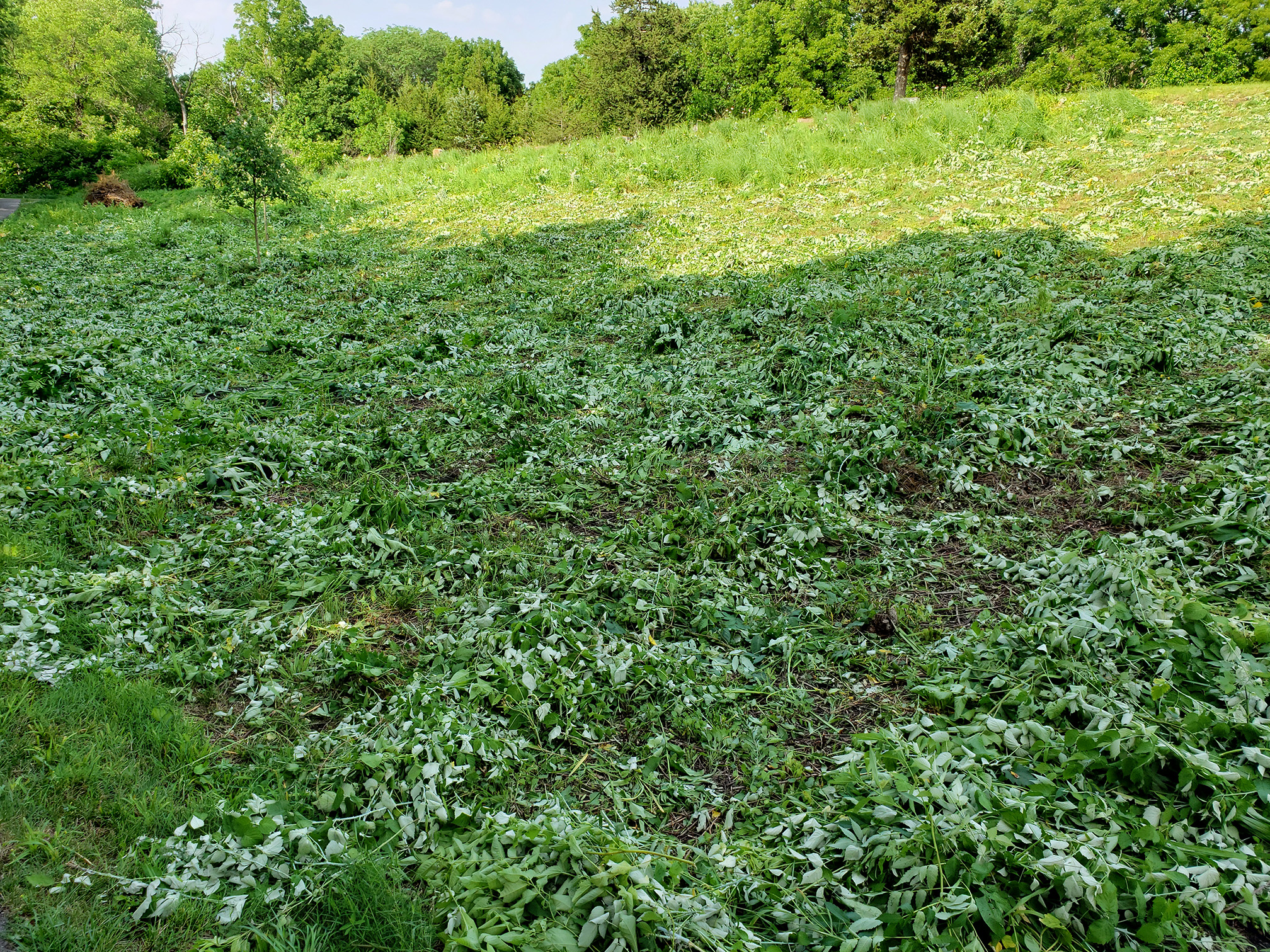
Unwanted woody and weedy species were removed using brush cutters in July and August of 2020. Mechanical management took place again this summer. (Photo: Sarah Nizzi.)
Amongst the decaying debris of unwanted woody species, a light purple bloom finally caught my eye. Sure enough, the wild pansy had returned! Similar to the year before, once my eyes adjusted to seeing the plant, I soon noticed it was visible in multiple locations on the hillside. The leftover leafy material from the brush clearing had mostly decomposed over the fall and winter. The only evidence left behind was cut stumps and thick stems scattered across the ground. For the second consecutive year we were assured our restoration efforts
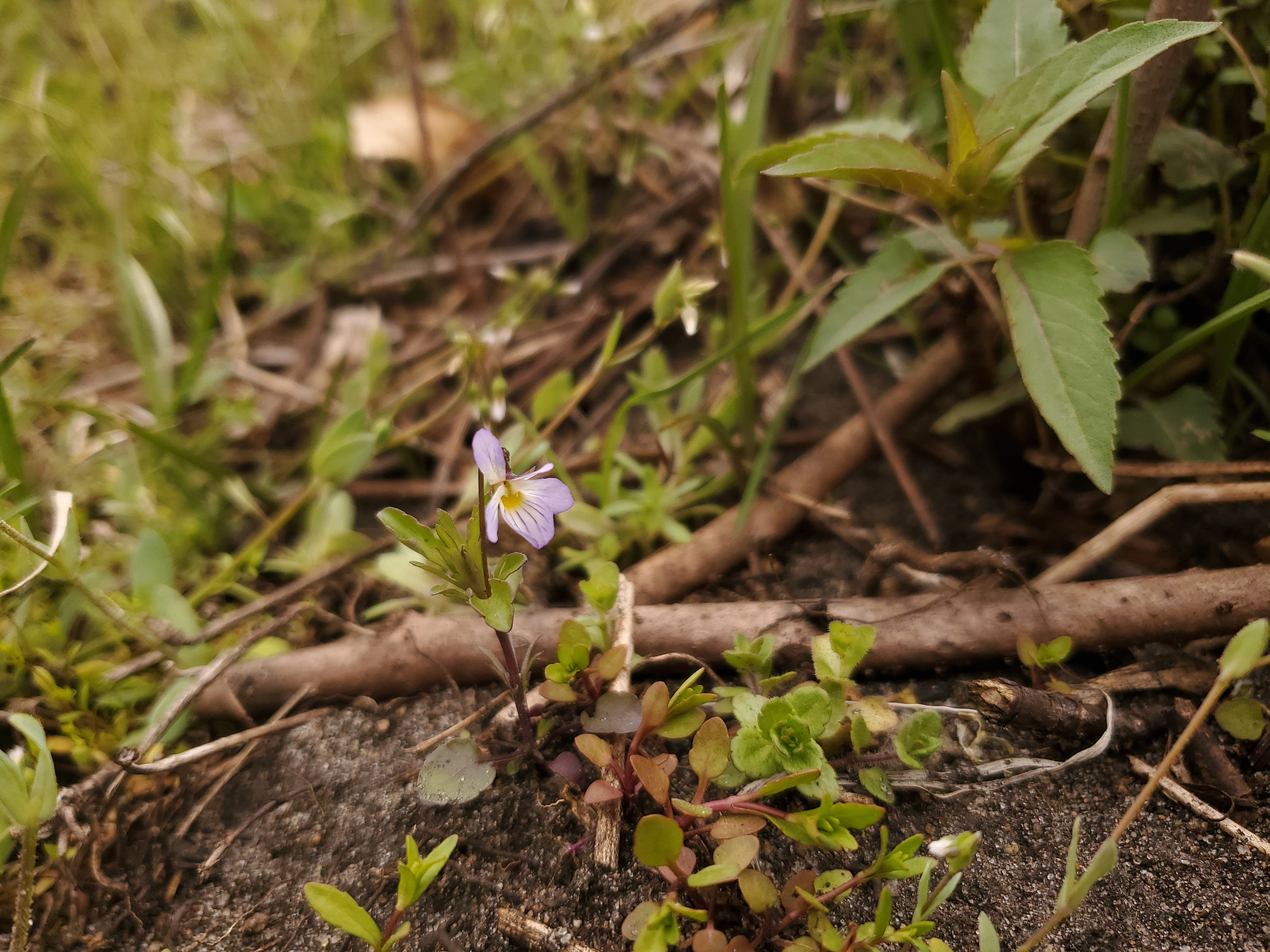
Wild pansies (Viola bicolor) were first discovered growing in the restored area of Polk City Cemetery in April of 2020. They bloomed again in April of 2021, pushing up through the decaying debris of the previous summer’s brush clearance. (Photo: Sarah Nizzi.)
There is a long to-do list of restoration activities for Polk City Cemetery. I returned to the cemetery in mid-April to help conduct a prescribed fire on a parcel at the southeast end of the cemetery. We are very motivated to continue our volunteer efforts to save these remnant prairie parcels. We witness time and time again ecological hints that fuel our ambition. In the same area as the wild pansy, prairie larkspur (Delphinium virescens), a high-value native forb species closely associated with undisturbed or old prairie, emerged this June and is now recolonizing spaces once dominated by exotic species. Two other native species, pale purple coneflower (Echinacea pallida) and western evening primrose (Calyophus serrulatus), also bloomed this June in the recently burned area, all signs of recovery from the remnant prairie community. I feel a great sense of pride and purpose in giving back to this historical site and the wildlife it supports.
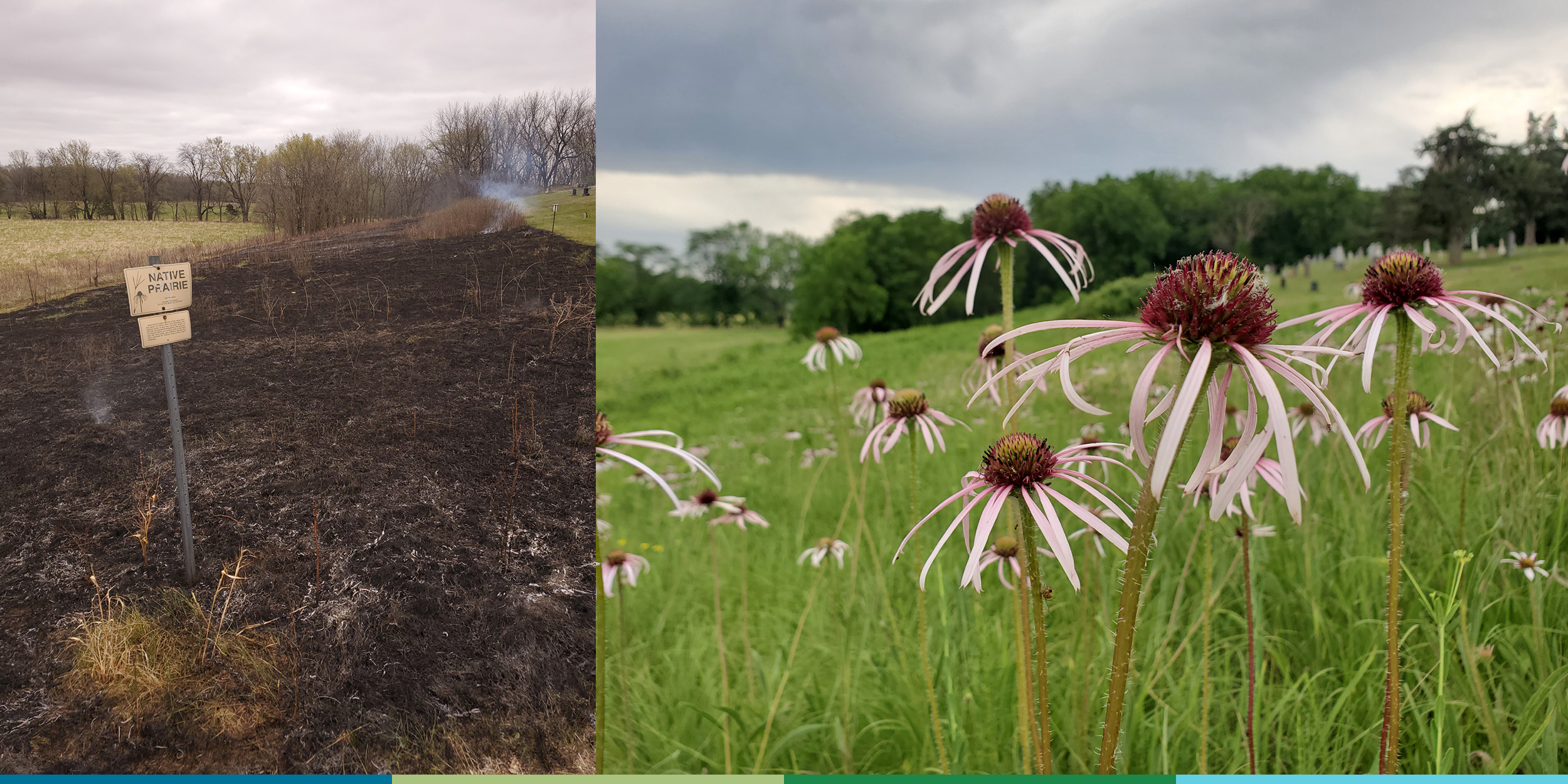
On April 15, 2021, a prescribed fire took place within the southeast parcel of Polk City Cemetery. The goal of the prescribed fire was to control unwanted species and promote recovery of native prairie plants. In June, pale purple coneflowers (Echinacea pallida) dominated the north end of the parcel. (Photo: Sarah Nizzi.)
I will close out this piece with a thought that I shared in the previous blog: Land management is an ongoing process. In order to maintain the diversity of our native ecosystems, we must manage them. We have already so disrupted our environment that if left untouched, invasive, and undesirable species will continue to fight for dominance of our landscape—and they will win. We must do our part to ensure natural lands remain wild and biodiversity thrives. Brush cutters and fire might seem damaging, but they are effective tools for protecting ecosystems, bringing short-term disturbance for long-term gain. No matter how big or small the site is, every
Further Reading
Read the first part of this story: Discovery of a Rare Plant Through Remnant Prairie Restoration
Read more about Managing Natural Lands for Pollinators
Find plant lists, habitat management guidance, and much more in the Pollinator Conservation Resource Center
Sign the Pollinator Protection Pledge

